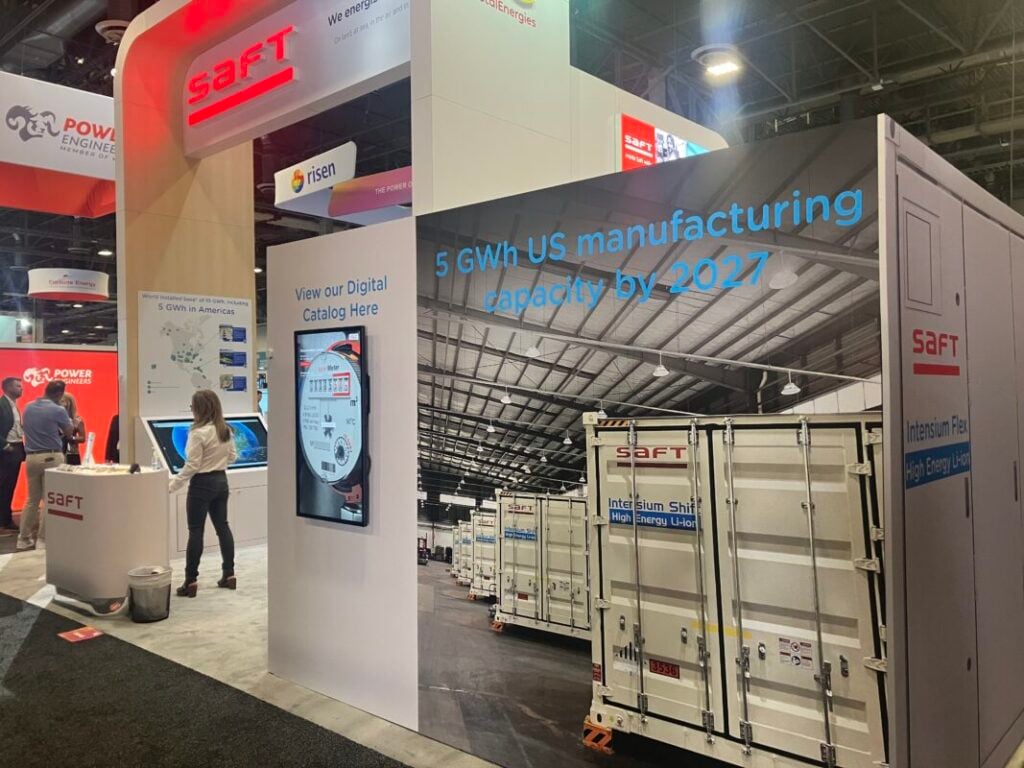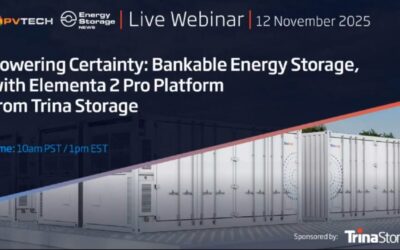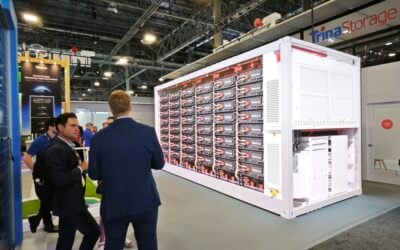
The battery storage industry’s race for higher energy density should be put into a site-level perspective, rather than focusing solely on larger cells.
That was a view shared by representatives of two manufacturers and system integrators of battery energy storage system (BESS) technologies, given in separate interviews with ESN Premium.
Much of recent industry conversation and many headlines have been dominated by the seemingly competitive approach to energy density increases that the BESS business divisions of lithium-ion (Li-ion) battery manufacturers, predominantly those based in China, have adopted.
Most recently, in September, BYD unveiled Haohan, a 14.5MWh BESS unit, which the company claimed achieves an equivalent of 10MWh capacity in a 20-foot area. As Energy-Storage.news wrote at the time, that doubled the common industry standard of around 5MWh per 20-foot standard ISO container.
Try Premium for just $1
- Full premium access for the first month at only $1
- Converts to an annual rate after 30 days unless cancelled
- Cancel anytime during the trial period
Premium Benefits
- Expert industry analysis and interviews
- Digital access to PV Tech Power journal
- Exclusive event discounts
Or get the full Premium subscription right away
Or continue reading this article for free
Haohan also uses a BYD Blade Battery of 2,710Ah and while some sources have commented that the Blade Battery is as much module as cell, for an individual component, the sizing is significant.
Other examples abound, with CATL launching its 9MWh Tener Stack product and Sunwoda and Eve Energy progressing the commercialisation of 600Ah+ cells. At this year’s SNEC trade show in Shanghai, a whole host of other companies presented cells in excess of the 314Ah capacity that again had become something of an industry standard.
At the US trade show RE+ in September, energy density was arguably the most frequently discussed topic after domestic content.
‘Everything big’
“Yes, [energy] density is becoming one of the key elements for energy storage. Basically, the solar farms are bigger and bigger, and the shifting needs are bigger and bigger,” Vincent Le Quintrec, energy storage sales and marketing director at Saft, told ESN Premium.
“We’re now taking about 4-hour duration projects more commonly, 4-hour is kind of the norm in Australia, California and couple of other areas, and we know that it will move to 6-hour and so on. We know that sites of more than one gigawatt-hours, will become kind of normal in a lot of markets.”
Saft is the battery manufacturer and BESS integrator owned by France’s TotalEnergies. Le Quintrec said the company had even been in negotiations for projects that might host more than 10GWh at a single site in some regions.
The race toward “big things, everything big” in the industry includes cells, but Le Quintrec said that when speaking with customers about energy density, the focus should be on energy available at the point of connection to the grid.
“Not at DC level, not at AC level, but at the point of connection per metre squared. That’s the first criteria [for considering energy density].”
The second is considering the logistics of the equipment, including ease of transport and then installation. That means controlling the weight and limiting the amount of site work that needs to be done, according to the Saft representative.
The company’s newest iteration to its grid-scale Intensium BESS solution range is Intensium Flex (i-Flex). It’s a liquid-cooled AC block with 3.4MWh to 5.1MWh capacity, aimed at being a compact building block for energy storage projects at gigawatt-hour scale.
Using lithium iron phosphate (LFP) cells, it will be available by the end of 2026 or beginning of 2027 in both AC and DC configurations. Similar to Tesla’s recently launched Megablock product, it enables users to connect multiple units in parallel. Its thermal insulation design will allow containers to be deployed back-to-back and side-by-side, thereby reducing their footprint.
“We believe with our solution, having an AC block—and we designed a 20MWh AC block with a [weight] limit of 43 tonnes. Easy to transport, easy to install, is the right answer. We will be able to reach 1.5kWh per square metre with i-Flex,” Le Quintrec said.
Luke Witmer, VP of software engineering at Wärtsilä Energy Storage, agreed that ease of installation and logistics are major factors to consider.
“From a physical perspective, the costs of building and owning and operating a battery plant, sure, the land is expensive, and you want it to be energy dense, and that’s really important, but in the end, there’s a lot of other costs as well, [many relating to] transportation costs,” Witmer told ESN Premium.
In terms of construction and integration, certain technologies may take longer to install, which would add cost. Witmer added that choosing “a 20-foot BESS enclosure with the most battery capacity [possible] shoved into it” may not equate to easy commissioning.
High-density containers might have outsized auxiliary power loads, for example, among a wide range of factors to consider, over the whole lifecycle of the project and directly related to the business case.
That said, from his own specific area of expertise in data and software, Witmer said that energy management system (EMS) controls and plant optimisation are only marginally impacted by energy density.
“It changes the models a bit. So, if you have a denser one and the thermal profile is different, that impacts it. However, for us, we simply train a different model and fit the thresholds differently to capture those anomalies. The algorithms will still work regardless of whether it’s more or less energy,” Witmer said.
Le Quintrec said, meanwhile, that higher energy density is unlikely to be a significant cause of project development bottlenecks in terms of permitting or discussions with planners, as long as key certifications are in place and products are bankable.
No standard cell size anymore
Beyond the physical and technical considerations outlined above, Le Quintrec said it could prove problematic that different BESS cells are being produced which have wildly varying capacities and form factors.
“That’s the problem. Everybody is talking about big cells, but there is no one standard. Today, there is one standard, which is the 314Ah [cell]. Therefore, we understand that this is a standard, and we recognise that another solution can replace one with the same formula.”
The market is “not yet mature” in dealing with the bigger cells or the divergence of capacities, he said.
However, the market is undoubtedly excited about the rapid progress of battery technology and Saft is no different in that respect.
The company will bring out a new solution, SuperFlex, in 2027 which will use 600Ah+ cells, Le Quintrec said. Though Saft does manufacture some of its own cells, SuperFlex cells will be sourced from an outside supplier and currently the company’s R&D team is “ageing big cells, trying to figure out what will be the standard for tomorrow,” he said.
While he was not yet able to divulge details of the new product, its key concept and a principle held by Saft—which Le Quintrec points out was the first to commercialise the 20-foot container form factor—is too keep design consistent with what the industry is used to.
“Saft invented the 20-foot container concept and 13 years later, we keep using the same concept but increasing the energy density ten times. Our first container was 500kWh [capacity], now it’s 5MWh.”
“We will keep [this], because we strongly believe that’s the way; including big cells, but we must make sure that we control the supply to the customer, and we have this ability. everybody needs to keep the agility and ability to control the supply. That’s a really key element in my mind because if you decide on one technology and there is a unique provider of this technology, you know what can happen.”
This article has been amended to reflect Luke Witmer’s current job title and role accurately.





